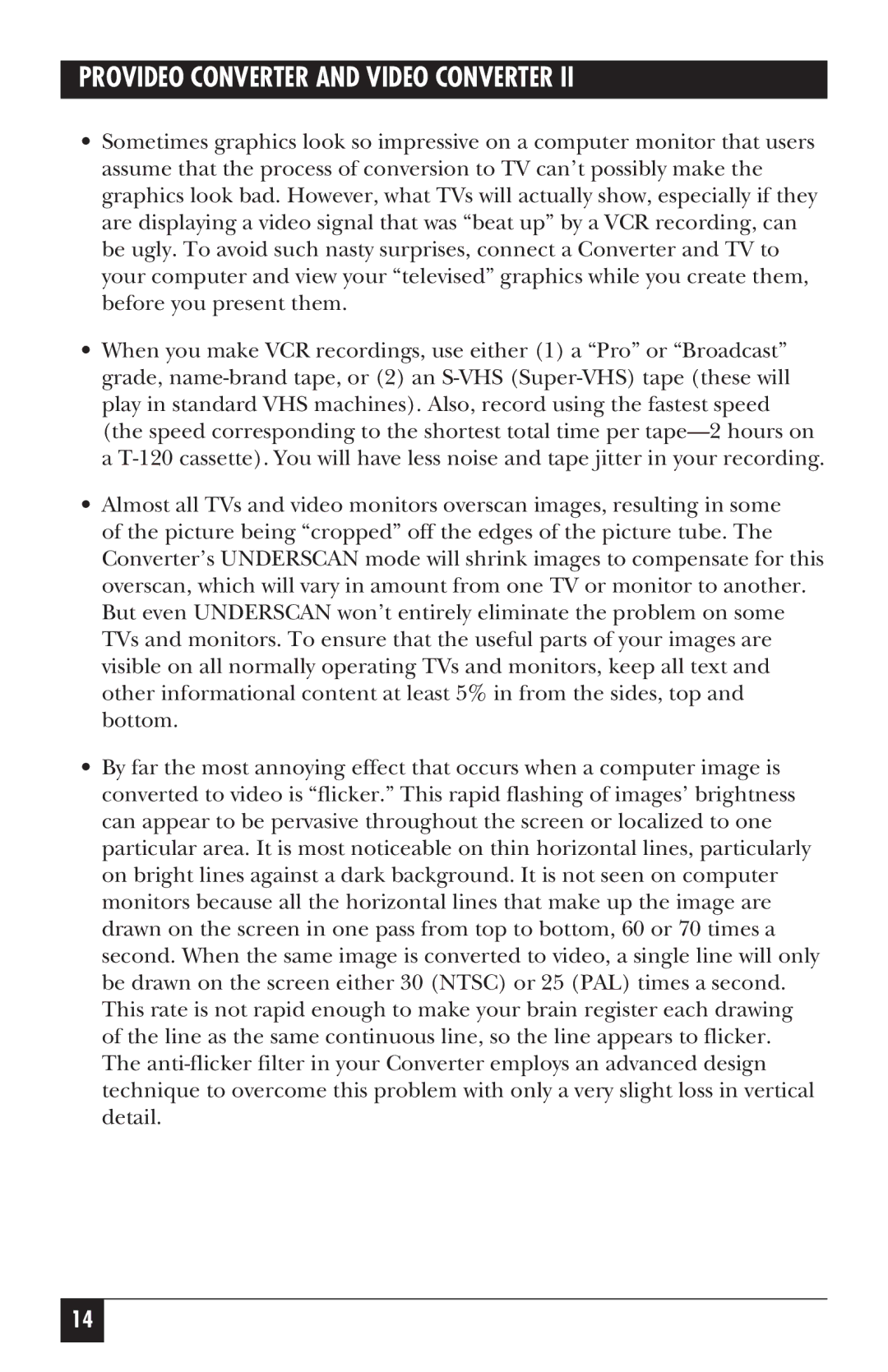
PROVIDEO CONVERTER AND VIDEO CONVERTER II
•Sometimes graphics look so impressive on a computer monitor that users assume that the process of conversion to TV can’t possibly make the graphics look bad. However, what TVs will actually show, especially if they are displaying a video signal that was “beat up” by a VCR recording, can be ugly. To avoid such nasty surprises, connect a Converter and TV to your computer and view your “televised” graphics while you create them, before you present them.
•When you make VCR recordings, use either (1) a “Pro” or “Broadcast” grade,
•Almost all TVs and video monitors overscan images, resulting in some of the picture being “cropped” off the edges of the picture tube. The Converter’s UNDERSCAN mode will shrink images to compensate for this overscan, which will vary in amount from one TV or monitor to another. But even UNDERSCAN won’t entirely eliminate the problem on some TVs and monitors. To ensure that the useful parts of your images are visible on all normally operating TVs and monitors, keep all text and other informational content at least 5% in from the sides, top and bottom.
•By far the most annoying effect that occurs when a computer image is converted to video is “flicker.” This rapid flashing of images’ brightness can appear to be pervasive throughout the screen or localized to one particular area. It is most noticeable on thin horizontal lines, particularly on bright lines against a dark background. It is not seen on computer monitors because all the horizontal lines that make up the image are drawn on the screen in one pass from top to bottom, 60 or 70 times a second. When the same image is converted to video, a single line will only be drawn on the screen either 30 (NTSC) or 25 (PAL) times a second. This rate is not rapid enough to make your brain register each drawing of the line as the same continuous line, so the line appears to flicker. The
14
